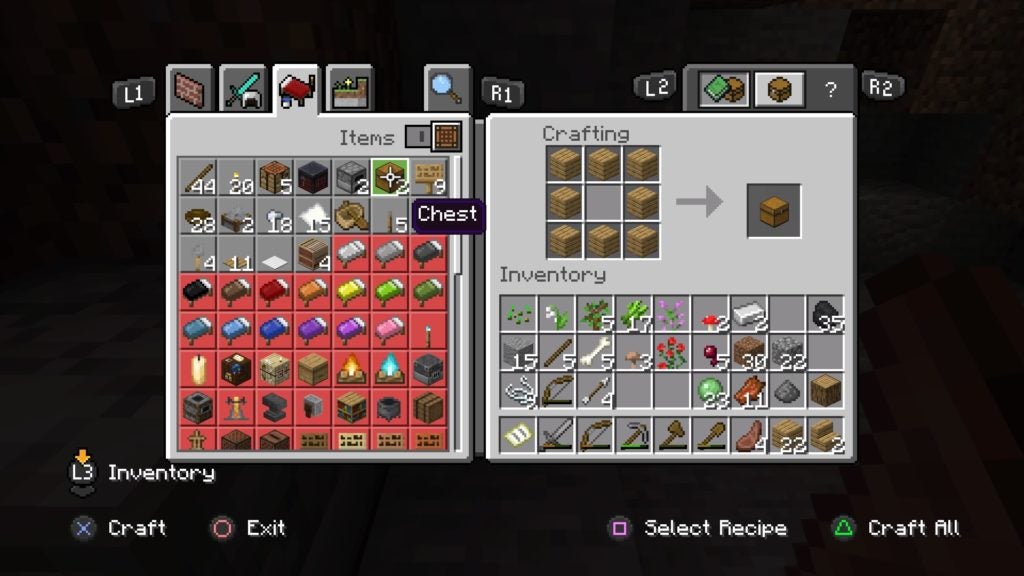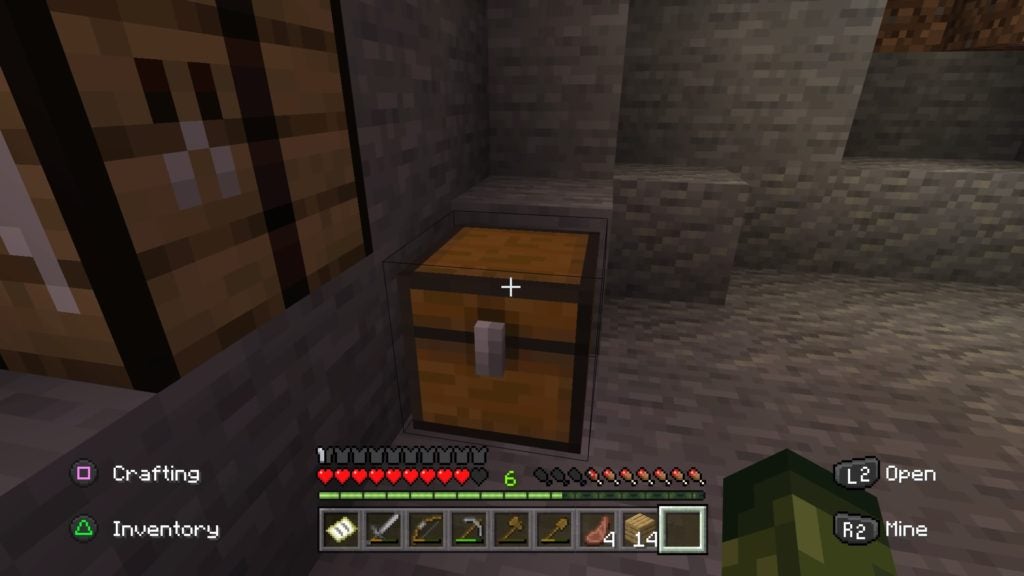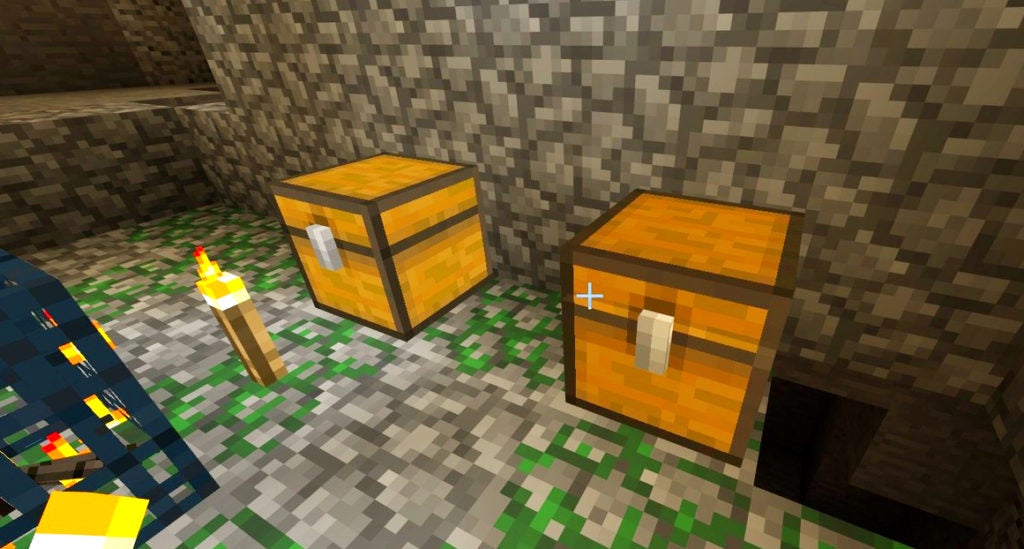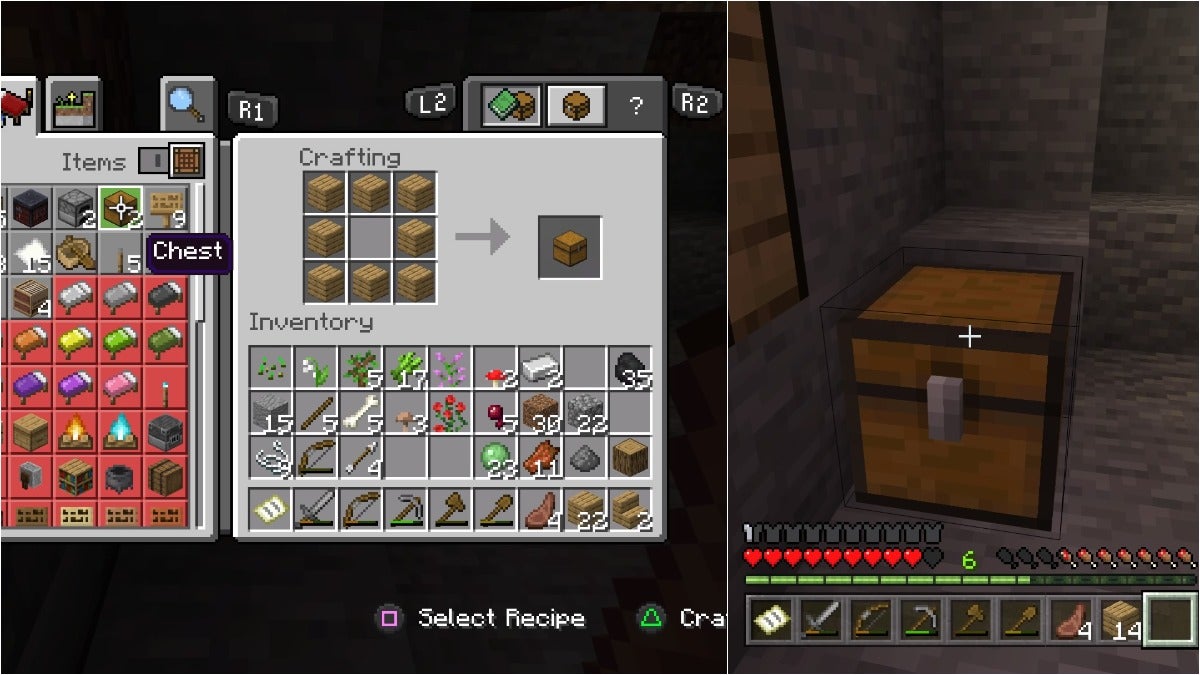Inventory management is crucial in Minecraft, as having a cluttered inventory leads to frustration. You can thankfully build containers, such as Chests, to store all of your tools, resources, and more.
Table Of Contents
What You Need to Craft a Chest

To craft a Chest, you’ll only need a Crafting Table and 8 blocks of any kind of Wood Planks. The recipe for creating a Chest looks like a ring when all of the components are placed. To put it simply: fill up every slot of a Crafting Table with Wood Planks except for the middle slot. Any ratio of any kind of Wood Plank can be used to make a Chest–the planks used don’t need to match.
How to Make a Crafting Table
Making a Crafting Table is quite simple in that it’s made from 4 blocks of Wood Planks. Place these planks into all 4 slots of your inventory crafting menu to make a Crafting Table.
How to Make Wood Planks
Wood Planks are even easier to make than a Crafting Table. All that you need to do to make some is to place Wood Logs into any crafting menu slot. Every 1 Wood Log will produce 4 Wood Planks.
You should keep in mind that the Wood Planks created will be the same type of wood as their log counterparts. For example, Oak Logs will become Oak Planks.
How to Use a Chest

Before you can store anything inside of a Chest, you need to place it. After doing so, make sure that the area above the Chest is clear. If this area isn’t clear, you can’t open it. Every Chest will offer you 27 slots of storage space. This is the same amount of slots you have in your inventory (excluding the 9 hotbar slots). You can open a Chest from any angle, so you don’t need to stand in front of it to access its contents.
About Double Chests
If you place 2 Chests next to one another while they are facing the same direction, they will merge into a Large Chest. A Large Chest has 54 slots of storage–double the amount of a regular Chest. These are the containers with the most storage space in the game.
Using Chests with Pack Animals
By using a Chest on a Donkey, Mule, or Llama, you will permanently attach it to them. This will allow you to have greater storage space while traveling, however, there will be fewer slots. When affixed to a pack animal, the Chest will have 15 slots for Donkeys and Mules. When attached to a Llama, a Chest will have between 3 to 15 storage slots, depending on the Llama’s Strength level.
Using Chests as a Fuel Source for Furnaces
Coal and Charcoal are much more efficient sources of fuel for Furnaces, though any wooden items can be used instead. Chests, being made from wood, can be placed into a Furnace’s bottom slot as fuel if you are low on Charcoal and Coal.
Where to Find Chests That Naturally Spawn in the World

Chests can be generated in certain kinds of structures. They often contain interesting loot, however, they can also be looted themselves. Simply break a Chest with your hands (or an Axe for maximum efficiency) to collect it. You can find Chests in the following structures:
- Villages
- Dungeons
- Strongholds
- Jungle Temples
- Desert Temples
- Igloos
- Woodland Mansions
- Shipwrecks
- Ocean Ruins
- Pillager Outposts
- Bastion Remnants
- Ruined Portals
- Nether Fortresses
- End Cities


